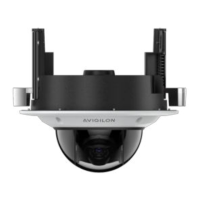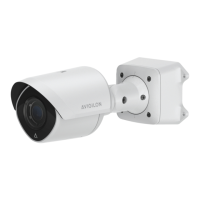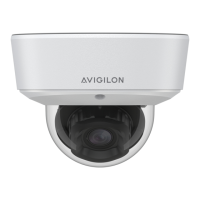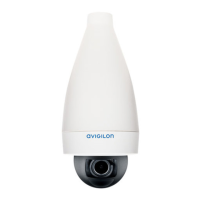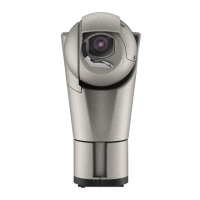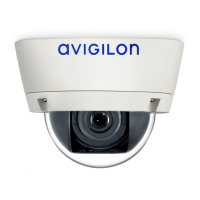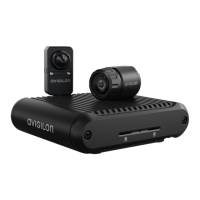1. To configure a digital input:
a. In the Digital Inputs area, enter a name for the digital input in the Name field.
b. Select the appropriate state from the Circuit State drop-down list. The options are:
l
Normally Open
l
Normally Closed
Note: Some cameras can detect the circuit state of the digital inputs automatically and
the input will trigger when a change in state is detected. For these cameras, the Circuit
State setting will have no effect on the digital input function.
c. Click Apply to save your changes.
Once the digital input is connected to the camera, you will see the connection status in the
Circuit Current State area. The status is typically Open or Closed.
2. To configure a digital output:
a. In the Digital Outputs area, enter a name for the digital output in the Name field.
b. Select the appropriate state from the Circuit State drop-down list.
c. In the Duration field, enter how long the digital output is active for when triggered. You can
enter any number between 100 and 86,400,000 milliseconds.
d. Click Trigger to manually trigger the digital output from the web interface.
e. Click Apply to save your changes.
Audio
Use the settings on the Audio page to adjust the audio quality of the camera.
For encoding the audio stream, you can choose from the Opus sound encoder, which produces high-quality
sound, or the G.711 protocol sound encoder. Use the Opus encoder if you are using ACCsoftware Release
6.10 or later (or a third-party video management system that supports the Opus protocol). Otherwise use the
widely supported G.711 protocol.
1. In the Audio Settings section:
a. In the Encoding field, specify the audio encoder to use:
l
Opus:Default high quality audio codec.
l
G.711: Supported on various platforms.
2. In the Device Speaker section, use the Volume slider to adjust the volume on the speaker (from 0 to
100).
3. In the Device Microphone section:
4. Click Apply to save your changes.
Audio 24

